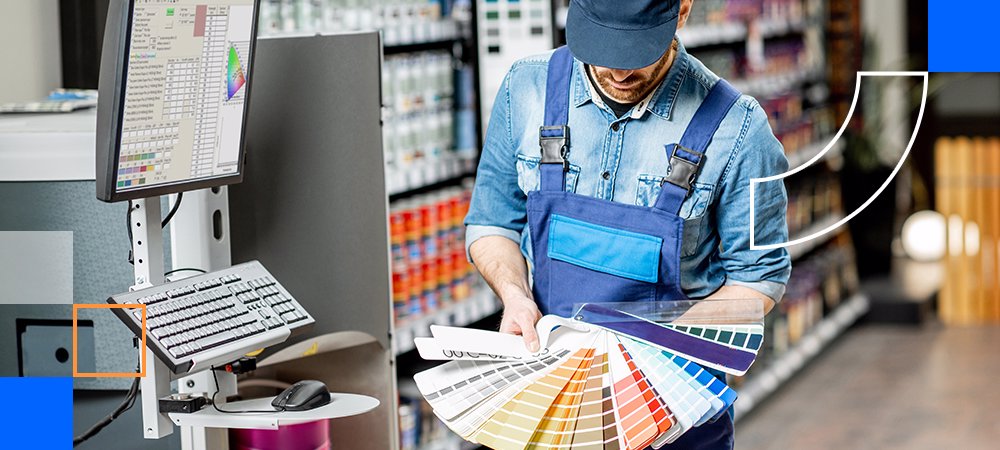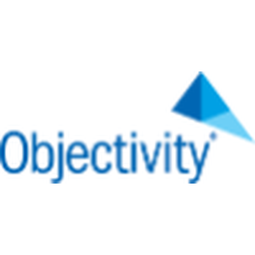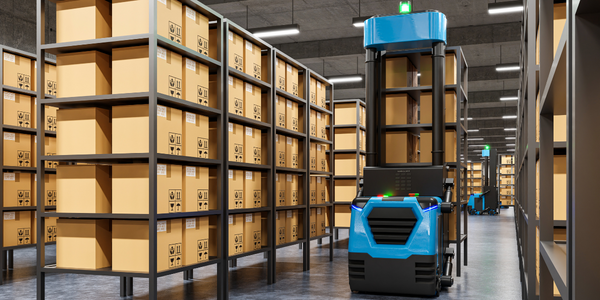
Technology Category
- Application Infrastructure & Middleware - Event-Driven Application
- Sensors - Level Sensors
Applicable Functions
- Maintenance
Use Cases
- Leasing Finance Automation
- Material Handling Automation
Services
- System Integration
The Customer
Not disclosed
About The Customer
The client is a Europe-based international producer of paint and coatings that operates in more than 150 countries. As a global industry leader with long traditions, the company delivers excellent products, while focusing on sustainability and innovation. The client leverages multiple production sites on several continents, all supported by a single system for mixing and labelling produced paint. Any major malfunction or downtime of this application halts the production and results in financial losses for the company.
The Challenge
The client, a global paint manufacturer with multiple production sites across continents, relied on a single system for mixing and labelling produced paint. Any significant malfunction or downtime of this application would halt production, leading to financial losses. The client was using a bespoke application delivered by a third-party vendor, which required multiple manual steps to launch, such as selecting the correct databases. The client sought to automate this process and reduce the solution’s technical debt, which was slowing down paint production. Additionally, the existing desktop app had compatibility issues with the new version of the Microsoft operating system. The client needed a reliable partner to provide baseline support and continuous improvements to this business-critical system.
The Solution
In 2014, the client approached Objectivity with the desktop application for mixing and labelling paint. The application had significant technical debt, needed improvements, and wasn’t compatible with the upcoming new Microsoft operating system. The application was hosted on a virtual machine without access to its source code, which presented a significant challenge. Objectivity delivered the 2.0 version of the application, moved the code to a single repository, and took over the support. They presented the client with a product backlog focused on reducing technical debt and improving the user experience (UX) of the solution. The extended cooperation is based on the DevOps model, where a shared team is responsible for the support and maintenance of the solution, as well as for making enhancements and developing new features. The Service Delivery Manager (SDM) plays a crucial role in the project, acting as the focal point of contact for the Client.
Operational Impact
Quantitative Benefit

Case Study missing?
Start adding your own!
Register with your work email and create a new case study profile for your business.
Related Case Studies.

Case Study
Metal Fabrication
As each mast section needs a total of 222 reliable welds, manufacturing them is an extremely labor intensive process.Until recently, STROS had to use highly skilled welders to make these sections. Although it has been using robots for 25 years, these machines could not manage the complex arc welds in narrow spaces needed for these particular components. Consequently, in order to produce a satisfactory number of mast sections it had to employ three welders per shift at three separate workstations to make these pieces. Apart from the obvious outlay this required in terms of manpower and space, STROS found it increasingly difficult to recruit the highly qualified welders needed for this work. That's why in 2007 the company decided to hold a tender for the complete robotization of its manufacturing process for mast sections. Of the four firms who participated, only the ABB group could fulfill all its requirements.

Case Study
Digital Transformation in Insurance: A Case Study of Menora Mivtachim
Menora Mivtachim, one of Israel's largest pension fund and insurance carriers, was facing a significant challenge due to demographic trends in Israel. The growing rate of retirement planning and services was putting unprecedented pressure on the already strained insurance sector. The pension claims process was bottlenecked with complexities, bureaucracy, and errors. Menora Mivtachim's existing pension process was heavily manual and spreadsheet-based, requiring a team of 10 full-time employees to manage. The process involved gathering applicant information, conducting personal surveys, compiling bank information, and finalizing agreements. To leverage the growing opportunity in the retirement sector and position themselves as innovative insurtech leaders, Menora Mivtachim needed to digitalize their process, streamline the claims experience, and reduce quote times through automated processes.

Case Study
ANZ Bank's Digital Transformation with Nintex Advanced Workflow
ANZ Bank, one of the top 50 banks in the world and the fastest-growing bank in Indonesia, was facing a challenge with its rapidly increasing transaction volume. The bank's existing business processes and workflow were becoming overwhelmed. Like most banks in Indonesia, ANZ was manually handling document submission and verification. Customers filled out paper loan applications and supporting documents, then delivered them to bank branches by mail or courier. Branch officers traveled to the bank’s headquarters or used postal mail, email, and phone calls to submit loan documents for verification. Lost or inaccurate documents created more emails and phone calls. Additionally, ANZ had to adhere to strict verification and financial regulations, including the Foreign Accounts Compliance Act. This act requires that all banks outside the United States provide key information about U.S. clients, including citizenship validation, to the Internal Revenue Service–a complex yet crucial process.

Case Study
Automation in Mining: Unleashing Productivity and Efficiency with 5G
The mining industry, a significant contributor to global economic activity with revenues exceeding USD 500 billion, is facing a challenge of improving efficiency and profitability. The industry is gradually shifting its focus towards automation as the next area of opportunity. Boliden, one of the world's most successful mining companies, operates the Aitik mine, the largest open pit in Europe. The Aitik mine is expanding, and with the increase in production from 36 million metric tons of ore to 45 million metric tons, the amount of rock removed will also increase significantly. However, increasing the number of machines required for rock removal in a busy mine is not a straightforward task. Additionally, every blast creates toxic gases that need to dissipate before humans can enter the area and begin excavation. The challenge lies in improving efficiency, managing the increased production, and ensuring safety in the harsh mining environment.

Case Study
Conveyor Belt Monitoring
In a smart environment of management, control and industrial automation, one of the key elements to anticipate failures and increase productivity is to be able to monitor the status and use of conveyor belts of any kind of sector, whether it is for logistics or manufacturing.








